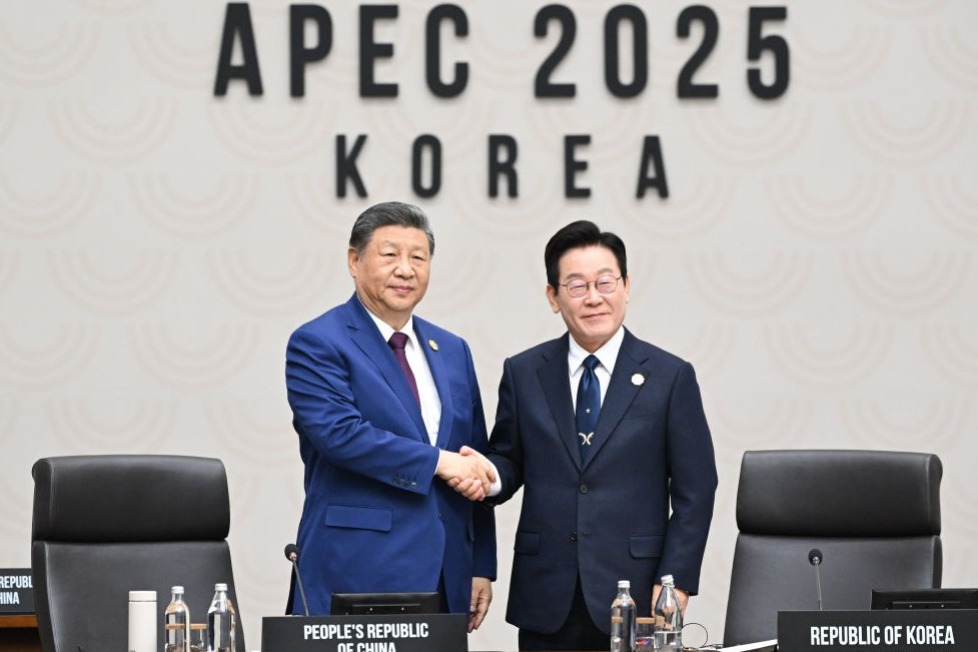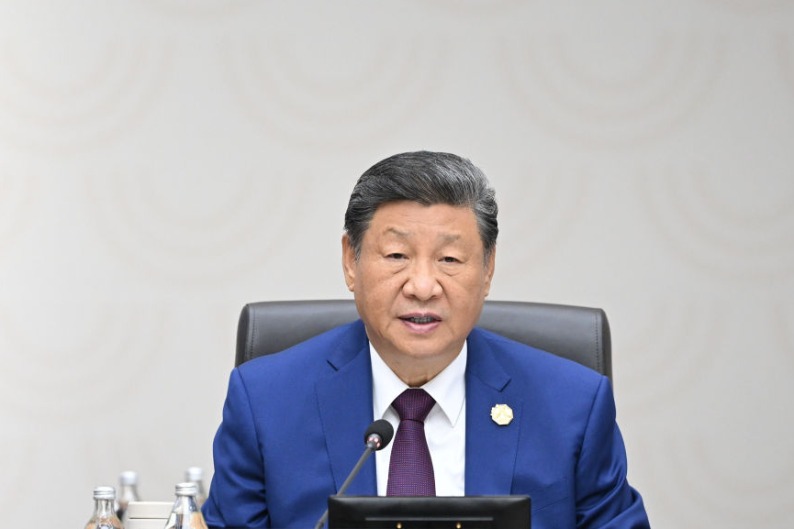Alexander Yegorov: How to promote exchanges and development in painting between China and the West?
Ecns.cn | Updated: 2022-11-28 10:35

CNS: What are the similarities and differences between traditional Chinese painting and Russian, or maybe Western, painting in terms of ideas and techniques? In what way do we influence each other concerning the art of painting?
Yegorov: There are many differences between European painting and traditional Chinese painting. For example, in the attitude of describing time, there are some dramatic plots in European painting, while traditional Chinese painting is more reserved.
My favorite ancient Chinese painters, Fan Kuan and Guo Xi, presented four-dimensional space in their work.
Russian painting was much earlier influenced by Chinese painting art. For example, Palekhsky in Russia, a center for artists to create, was influenced by Chinese painting in the 19th century, and more Chinese artistic elements were added to the works. Another example is the well-known matryoshka dolls, which are also inspired by traditional Chinese art.
In the 1950s and 60s, China’s best artists learned painting in the Soviet Union. When they returned, they combined the Soviet style with Chinese ideas to teach more artists. As for modern Chinese and Russian paintings, they have become part of world art, as they not only learn from each other but have more national characteristics.
CNS: China and Russia are both countries with a long history and unique artistic aesthetic. There are also differences in artists’ self-awareness and creative ideas. How can art be integrated and developed under such different ways of thinking?
Yegorov: I have gained a basic understanding of the thoughts of the Chinese Taoist philosopher Laozi and Confucius through reading books in the Russian version. Confucianism and Taoism have influenced my thoughts more directly, giving me a deeper understanding of nature and the world. Chinese philosophy profoundly influences the world.
Chinese and Russian classical paintings have made great contributions to the world. Russian artists such as [Andrei] Rublev, [Ivan] Kramskoy, and [Kazimir] Malevich not only created Russian style but also enriched the art with the qualities of irony and inspiration. At the beginning of the 20th century, the Russian avant-garde was also a breakthrough in artistic thought.
The integration and development between Russian and Chinese painting have a broader prospect. I know many Russians who learn Chinese artistic techniques and philosophical ideas. I also study Chinese calligraphy and sketch with Chinese artists, often applying these techniques and philosophies in my own work. I believe that more cultural exchanges between Russian and Chinese artists and exhibitions will open a new chapter for world art. Through modern art, a new generation of artists has found new ways of expression and, more important, redefined human identity in the modern world.
The future development of art should be more diversified. In addition to the legacy of classical painting, more modern elements should be added. For example, we can find electronic devices like computers and mobile phones in contemporary artworks, and people’s diets, clothing and even personality will be reflected in the works. But if we blindly pursue originality, it will be too impetuous. Tradition is the foundation, wisdom, and historical memory accumulated over thousands of years of human civilization. To better integrate and develop tradition and originality in promoting human civilization, we need more artists to explore together. Especially in today’s consumption-oriented life, we should not slow down artistic progress, which is also the theme of my exhibition today.
CNS: You have been invited to China many times for lectures, exhibitions and sketching. What impressed you, and what do you think of the interaction between the two countries in the art of painting?
Yegorov: My first visit to China was in 2007 when I was invited by the Harbin municipal government to have an exhibition of paintings and exchanges with the Yushun Art Museum. When I visited the exhibition of Jin Shangyi’s work in the National Art Museum of China in 2009, I felt the Russian painting style spontaneously. I was invited to an exhibition of Li Xiaolin’s work in Guangzhou; each of his character sketches is like a world with independent artistic spirit and language. The emotion of Chinese artists involved in their works is so real and delicate, which makes me admire them more. Around 2011, I participated in large-scale activities like the Beijing International Art Biennale, the Taiwan Youth Art Exhibition and the Guangzhou International Art Fair, and I had extensive exchanges and more international Chinese art.
In 2012 and 2013, I was invited to Southwest Minzu University to hold a solo exhibition and give a lecture. The models in the figure-painting class were from different nationalities. They kept their national languages, costumes, customs and so on, and learned and communicated with one another. This kind of inclusiveness and diversity attracts me even more. In addition, I have been invited to hold exhibitions and sketch in Dalian, Mudanjiang, Sanya, Chengdu, and other cities many times. Chinese respect for artists and their yearning for art are beyond those in Europe. Chinese art is increasingly recognized by the international community, and young Chinese artists are playing an increasingly important role in the world. We sometimes talk about the influence of the economy and military on the country and the world. In fact, art also can influence a country and even the world. When a country becomes strong, its culture and art will be more known and familiar to the world.
There is a special feature in the Russian art community: more and more young artists are interested in traditional Chinese art. They found that the continuity and normative results of the Chinese concept of art – the inheritance of Chinese art – have a more profound heritage and historical responsibility. In terms of inheritance and promotion, Russian artists should learn more from Chinese artists. I hope more art exhibitions and art teaching can be jointly held between Russia and China, and more museums and galleries can exhibit works of artists from both countries so that art can reach more people. I will make an effort to promote more cooperation between the artists of the two countries.
At present, many young Chinese artists are studying in Russian institutions such as Repin St. Petersburg State Academy Institute of Painting, Sculpture, and Architecture and Moscow State Academic Art Institute, named after V.I. Surikov. They have mastered traditional techniques and integrated many Chinese elements, which has promoted the development of art in both countries. The study of Chinese calligraphy and landscape painting by young Russian artists also enables them to have more understanding and yearning for Chinese art. Art has long been regarded as a language without words, which requires more artistic communication and the efforts of younger artists. Through their aesthetic ideas, young artists make the world more colorful.
























